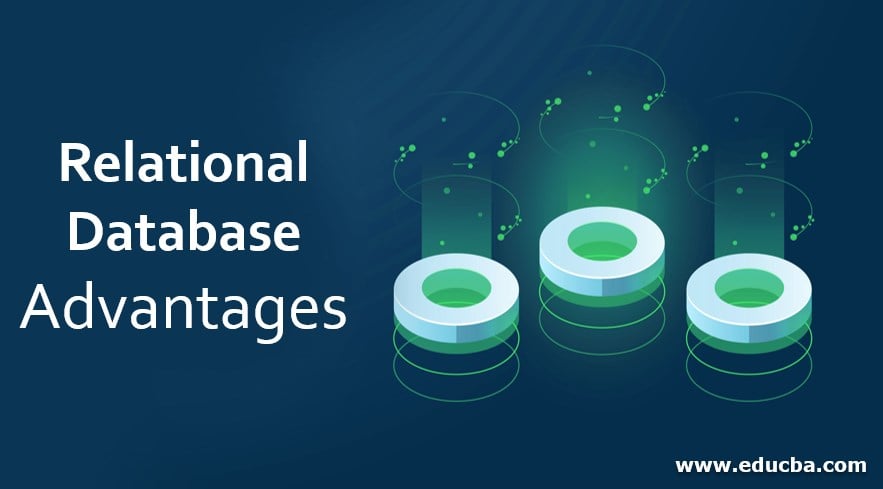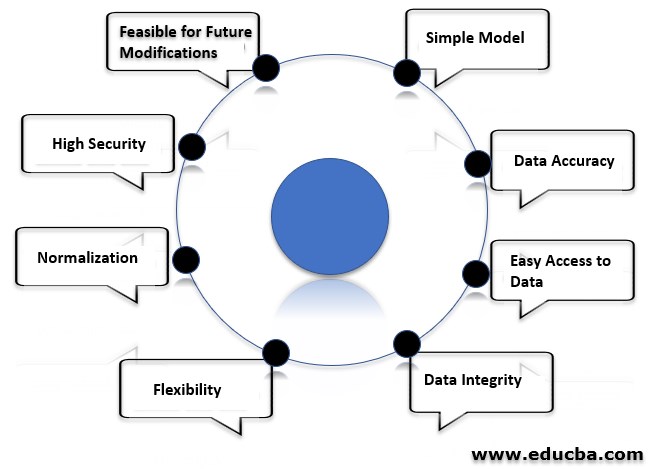Updated July 6, 2023
Introduction to Relational Database Advantages
A Relational Database consists of appropriately arranged tables from which data can be administered and operated in various ways without rearranging the entire set of database tables. SQL queries are applied for interactive queryings to fetch information and gather data for reporting and analysis purposes. This helps in making critical business decision-making processes convenient.
One of the significant benefits of using a Relational Database is that this type of database allows the user to classify the data into different categories and store them efficiently. This arrangement can be further fetched using queries and filters. After creating the new database, any data set under different categories can be included in the database without any alteration to the existing system. A Relational Database system has multiple advantages over any other type of database.
Top Advantages of Relational Database
A Relational Database system has multiple advantages over any other type of database. Below are a few significant advantages,
1. Simple Model
A Relational Database system is the simplest model, as it does not require complex structuring or querying processes. It doesn’t involve tedious architectural processes like hierarchical database structuring or definition. As the structure is simple, it is sufficient to be handled with simple SQL queries and does not require complex queries to be designed.
2. Data Accuracy
In the relational database system, multiple tables can be related to one another using a primary key and foreign key concepts. This makes the data to be non-repetitive. There is no chance for duplication of data. Hence, the relational database’s data accuracy is higher than in any other database system.
3. Easy Access to Data
In the Relational Database System, there is no pattern or pathway for accessing the data, as other types of databases can be accessed only by navigating through a tree or a hierarchical model. Anyone who accesses the data can query any table in the relational database. One can combine all or any number of related tables to fetch the required data using join queries and conditional statements. The user can effortlessly recover the relevant data by modifying the resulting data based on the values from any column or number of columns. One can select the desired columns to incorporate into the outcome, allowing for displaying only appropriate data.
4. Data Integrity
Data integrity is a crucial characteristic of the Relational Database system. Sturdy data entries and legitimacy validations ensure that the database confines all the data within suitable arrangements and contains the necessary data for creating the relationships. This relational reliability amongst the tables in the database helps avoid the records being imperfect, isolated, or unrelated. Data integrity aids in making sure of the relational database’s other significant characteristics like Ease of use, precision, and data stability.
5. Flexibility
The flexible structure of a relational database system allows it to accommodate constantly shifting requirements, enabling it to level up and expand for bigger lengths. This facilitates the increasing incoming amount of data and the update and deletes wherever required. This model also consents to the changes made to a database configuration, which can be applied without difficulty and without crashing the data or the other parts of the database.
A Data Analyst can insert, update or delete tables, columns, or individual data in the given database system promptly and efficiently, to meet the business needs. There is supposedly no boundary on the number of rows, columns, or tables a relational database can hold. In any practical application, the Relational Database Management System and the hardware contained within the servers limit the development and transformation. So these changes can create an alteration in other peripheral functional devices connected to the particular relational database system.
6. Normalization
To maintain the methodical style, one ensures that a relational database structure is free from any variances that could impact the integrity and accuracy of the tables in the database. A normalization process provides a set of regulations, characteristics, and purposes for the database structure and evaluation of a relational database model.
Normalization aims at illustrating multiple levels of breaking down the data. One should accomplish any level of normalization on the same level before advancing to the subsequent levels. To ensure the normalization of a relational database model, it should meet the requirements of the third normalization form. Normalization offers reassurance that the database plan is extra strong and reliable.
7. High Security
Users can designate tables as confidential or non-confidential in a relational database system. This enables the secure division of data across multiple tables. A relational database management system easily implements this segregation, unlike other databases. When a data analyst tries to log in with a username and password, the database can set boundaries for their level of access by providing admission only to the tables they are allowed to work on, depending on their access level.
8. Feasible for Future Modifications
Due to the organization of records in separate tables based on their categories, the relational database system makes it straightforward to insert, delete, or update records to meet the latest requirements. The relational database model tolerates the newest requirements presented by the business, accommodating evolving needs and demands. By maintaining the fundamental qualities of the relational database management system, it becomes possible to insert or modify any new or existing tables or columns of data, depending on the provided conditions.
Conclusion
To sum up all the advantages of using the relational database over any other type of database, a relational database helps maintain data integrity and accuracy, reduces data redundancy to a minimum or zero, data scalability and data flexibility, and makes it easy to implement security methods. Above all, a Relational Database Management system is a simpler database model to design and implement.
Recommended Articles
This is a guide to the Relational Database Advantages. Here we discuss the basic concept with the top 8 advantages of Relational Databases in detail. You may also look at the following articles to learn more-


